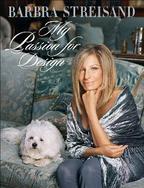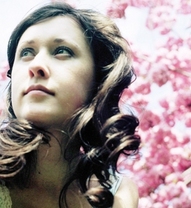Last night I attended a rare, live interview with Barbra Streisand.
 I don’t think I am alone in saying that many people found it inspiring to just be in the same room with her. Hearing her speak for an hour was a different kind of sacred. Well… it was like buttah.
I don’t think I am alone in saying that many people found it inspiring to just be in the same room with her. Hearing her speak for an hour was a different kind of sacred. Well… it was like buttah.
I could see why, in the words of Mike Meyers, Coffee Talk with Linda Richman, you could feel “a little verklempt” around her. Even the interviewer, Gayle King, of Oprah Magazine and radio was the interviewer, did everything but bow at her feet to let her know how much she is adored.
She was there to kick off this year’s Book Expo America–fondly known as BEA–as “the” keynote event. This coming fall, the Oscar-Emmy-Grammy-Tony winner and activist will add “author” to her impressive resume when her first book, My Passion for Design, is released by Penguin. BEA is the gathering place for booksellers and all of the publishing industry–a place where bestsellers are born.
It is so rare that Streisand does an interview that you want to listen closely as she shares details in a psychologically aware way. She said she had thought of writing a memoir, and penned a few chapters, but decided it is to personal and instead would write a design book. Even though most mortals will not get the chance to design million dollar homes, and may not be blessed with the same “exquisite” taste, we can dream and revel a bit in her devotion to details.
She shared that part of her meticulous detail to design came from a less than fortunate childhood. While her biggest fans seem to know this story, I had never heard it.
“We never had a couch,” she said of her home in Brooklyn, NY, where she lived with her Mom and brother after her dad died when she was 15 months old. “So a couch was very special. My friends had couches. We only had a dining room table with stiff chairs so we sat around the dining room table.”
Back then, she shared a bed with her mom and her brother slept on a pull out cot. It wasn’t until her mom remarried when she was 8 that they had a couch. Even though it was unattractive with nubby olive green and gray, it was a couch!
The only real piece of furniture she had in her room was a dresser. She put a fish tank atop to have “something that moved.” Years later, she would have the Pacific ocean outside her door.
During the interview it was revealed she seriously dislikes (hates) bright yellow and orange. She also mentioned a traumatic time in her youth that shaped her love of the color burgundy.
Preference for colors is psychologically linked to childhood, she said, and went on to tell the story of being sent to camp for kids with Anemia. Each child had to take medicated baths and wear a starched blue uniform. “The only way you could be individual was through your sweater.”
Toby, the woman who watched her for her mom, knitted her a burgundy sweater with a wooden button, and it allowed young Barbra to have a color of her own.
When Streisand talked about the “Elegant Barn” and “Mill House” she designed, both featured in the book, the attention to detail and getting things right was pretty intense. It sounded like the kind of famous attention to detail we have always heard of her putting into her movies.
She says ii is really just about getting it right. Her eye for seeing that which is out of place has allowed her to also create iconic music and movies. But, she admits, “it is a blessing and curse.”
She explained that in 1994, when a deal to direct a movie adaption of “The Normal Heart” fell through, she put her creativity into designing a home on her property. “I built a house instead of doing a movie,” she said. Along the way, she went through a series of disappointing architects and construction crews and others who could not execute her vision.
She even took most of the 300 photos in her book herself. Why? She felt she had to. “Because it was my eye capturing the things I love.”
Gayle King joked that Barbra was still furiously editing the galley of her book. “I will make changes until they rip it out of my hands,” she admitted.
She refuted the idea that she is a perfectionist. “I only know that I strive for excellence. I don’t know what it means to be a perfectionist. Nothing is perfect.”
When King asked her if it is challenging to have her hands on every aspect of her work she admitted it can be and added, “But it allowed me to take responsibility for my own success.”


